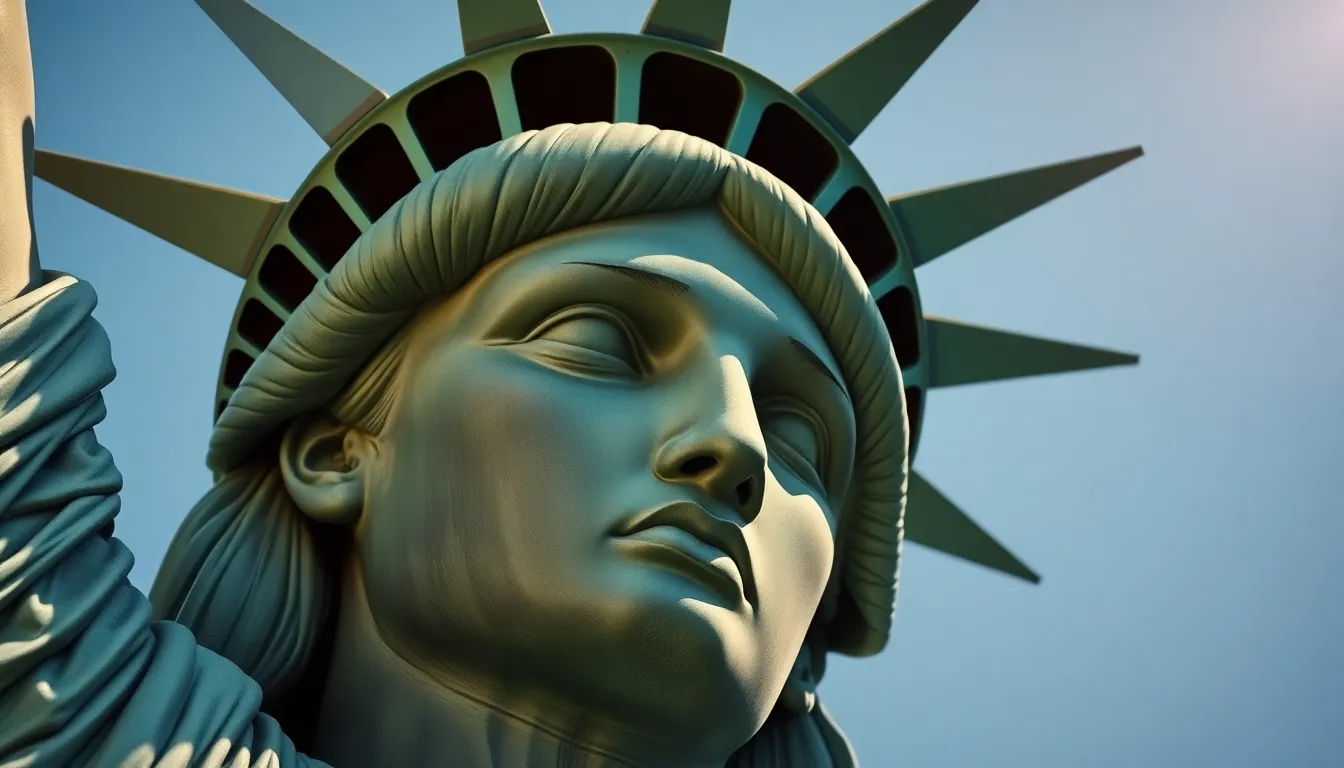When you think of the Statue of Liberty, the first thing that comes to mind is her iconic silhouette against the New York skyline. But what if we told you that her original face was a bit different? Yes, that’s right! The Lady Liberty we know and love has undergone some serious makeover magic over the years, and her first face might just surprise you.
Imagine a time when this colossal symbol of freedom sported a look that could rival even the most dramatic Hollywood transformations. From her early design quirks to the refined visage we admire today, the journey of Lady Liberty’s face is as fascinating as it is entertaining. So buckle up as we delve into the lesser-known story of her original face, and discover the hidden gems of history that make this statue not just a landmark, but a true character in America’s narrative.
Table of Contents
ToggleHistory of the Statue of Liberty
The Statue of Liberty boasts a rich history filled with fascinating details. Understanding her origins and the inspiration behind her face reveals much about this American icon.
Origins of the Design
The Statue of Liberty’s design originated from a collaboration between French sculptor Frédéric Auguste Bartholdi and engineer Gustave Eiffel. Commissioned in 1865, Bartholdi aimed to symbolize freedom and democracy. The statue stood as a gift from France to the United States, celebrating the centennial of American independence. Structural elements combined bronze and iron, allowing her to withstand harsh weather in New York Harbor. Completed in 1884, Lady Liberty was promptly disassembled for her voyage to America. Upon arrival, she underwent reconstruction on Liberty Island, establishing her presence as a symbol of hope.
Inspiration Behind the Face
Several influences contributed to the face of the Statue of Liberty. Bartholdi drew inspiration from the Roman goddess Libertas, who represents freedom. He infused her features with bold characteristics reflecting strength and resilience. The original face displayed a softer, more rounded appearance compared to the current likeness. Legend suggests Bartholdi’s mother served as a model for Lady Liberty’s countenance. Over time, significant corrosion and restoration efforts altered her appearance, leading to the eventual transformation seen today. Each iteration of her face embodies the evolving narrative of liberty and the values associated with it.
The Original Face of the Statue

The original face of the Statue of Liberty carries significant historical and artistic value. Distinctive features contribute to her emblematic representation of freedom.
Details of the Facial Features
Prominent details define Lady Liberty’s original face. High cheekbones and a strong jawline provide a regal appearance. Additionally, her eyes look forward with determination, echoing the spirit of hope. Bartholdi’s intention revolved around capturing the essence of liberty. Influences from Roman art suggest a connection to the goddess Libertas. Many believe the face embodies strength and resilience, reflecting the values of a nation welcoming immigrants.
Materials Used in the Sculpting
Copper served as the primary material for the statue’s face. Bartholdi chose this metal for its durability and resistance to the elements. Thin sheets of copper, only 2.4 millimeters thick, formed the outer layer. Underneath, a frame of iron provided structural support. This combination ensured longevity, which proved essential as the statue faced harsh weather conditions. Additionally, oxidation created the green patina that now characterizes the statue. The use of these materials contributed not only to its aesthetic appeal but also to the enduring legacy of Lady Liberty.
Restoration and Preservation Efforts
Efforts to restore and preserve the Statue of Liberty have been critical to maintaining her iconic status. These initiatives ensure the statue remains a symbol of freedom and hope for generations to come.
Initial Restoration Projects
Initial restoration projects began shortly after Lady Liberty’s unveiling in 1886. The statue underwent significant repairs in 1937, addressing corrosion and structural concerns. These efforts included reinforcing the iron framework and replacing deteriorated copper plates. Enhanced preservation techniques and strategic cleaning methods were employed to safeguard her original design. Attention focused on restoring her features, particularly the face, to reflect Bartholdi’s vision. Working closely with historians, conservators helped to maintain the statue’s historical authenticity while ensuring her enduring resilience.
Recent Preservation Techniques
Recent preservation techniques incorporate advanced technology for improved monitoring and maintenance. Scientists utilize laser scanning to assess structural integrity and detect corrosion. High-tech materials assist in protecting the statue from environmental factors. For example, specialized coatings protect against moisture and pollutants. Regular inspections and maintenance checks help identify issues before they escalate. Collaborating with engineering experts ensures the continued preservation of her original features. These modern methods honor her historical significance while enhancing her longevity as a national monument.
Cultural Significance of the Face
The original face of the Statue of Liberty carries profound cultural significance. Her features represent hope and resilience, making her a powerful symbol of American identity.
Symbolism in American Identity
Lady Liberty’s face symbolizes the ideals of freedom and democracy. High cheekbones and determined eyes reflect the welcoming spirit of a nation that embraces immigrants. Many view her presence as a reminder of the pursuit of liberty and justice for all. The strong jawline conveys strength, while the serene expression embodies the hope that defines the American dream. Such characteristics resonate deeply with immigrants seeking a better life, showcasing the statue as an enduring icon of opportunity and aspiration.
Influence on Art and Culture
Art and culture have drawn inspiration from Lady Liberty’s striking face for over a century. Artists incorporate her likeness into various works, capturing her essence in paintings, sculptures, and photography. Films and literature reference her as a beacon of hope, illustrating how her visage shapes cultural narratives. Photographers often frame her in symbolic ways, emphasizing her connection to national pride. The depiction of her face in diverse media reinforces her role as a cultural touchstone, continuously engaging audiences with themes of freedom and aspiration.
The original face of the Statue of Liberty serves as a powerful reminder of the ideals that shaped America. Her features encapsulate the spirit of hope and resilience that continues to inspire millions. As restoration efforts preserve her legacy, Lady Liberty stands not just as a monument but as a living symbol of freedom and democracy.
Understanding her evolution enriches the narrative surrounding this iconic figure. The story of her original face reflects broader themes of identity and cultural significance. As she gazes out over the harbor, she remains a beacon for those seeking opportunity and a testament to the enduring values that define the nation.




